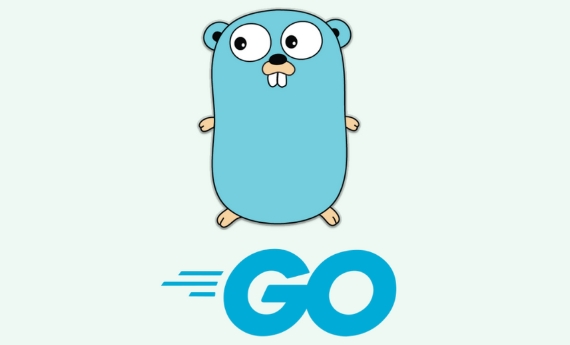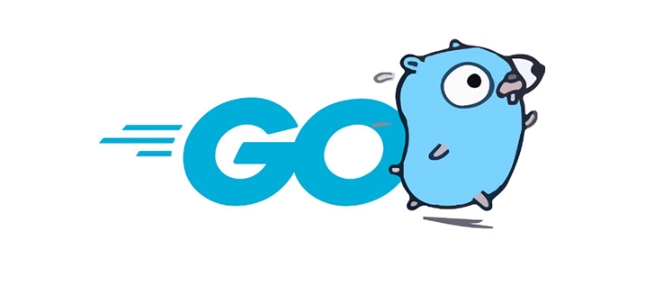Learning the design model is to solve practical problems in enterprise-level development and improve code structure, maintainability and scalability. 1. Use interface abstract behavior, such as defining the Repository interface to achieve database access layer decoupling, making testing easier, switching implementation more convenient, and reducing module dependence; 2. Use Option mode to configure complex objects, and flexibly set through function options construction, such as dynamically adding timeouts, proxy and other configurations when creating HTTP clients; 3. Use decorator mode to enhance functions without modifying the original logic, such as adding logs, monitoring and other functions through middleware decorators, which are suitable for Web frameworks and RPC services.

Learning design models, especially the Go design models for enterprise-level development, is not to show off skills, but to solve practical problems. In large systems, code structure, maintainability and scalability are very important, and the design pattern is a set of effective solutions summarized by predecessors.

The following aspects are the most common and useful design model ideas I encounter when writing enterprise-level projects using Go.
Use interfaces to abstract behavior and decouple core logic
The Go interface is lightweight, but powerful. Especially in enterprise applications, it is often necessary to separate business logic and specific implementation. For example, in the database access layer, we usually define a Repository interface and then implement it according to different data sources (MySQL, PostgreSQL, Mock).

The benefits of doing this are obvious:
- Testing is easier: Mock can be injected
- Switching implementation is more convenient: For example, if you change from MySQL to MongoDB, just change the implementation, and do not change the caller.
- Reduce inter-module dependencies: The caller only relies on the interface and does not care about the specific type
For example, you might write a UserRepository interface that contains GetByID(id string) (*User, error) method, and then use different implementations in different environments.

Configure complex objects using Option mode
When building objects with many configuration items, it is easy to become confusing to directly pass multiple parameters or use the struct initializer. At this time, you can use the "Option mode", that is, through a series of function options to construct the object.
For example, if we want to create an HTTP client, there may be options such as timeout, number of retries, proxy settings, etc. If you use Option mode, you can write this:
type ClientOption func(*Client)
func WithTimeout(d time.Duration) ClientOption {
return func(c *Client) {
c.timeout = d
}
}
func NewClient(options ...ClientOption) *Client {
c := &Client{
timeout: 5 * time.Second,
// Other default values...
}
for _, opt := range options {
opt(c)
}
Return c
}This makes it very flexible when calling:
client := NewClient(WithTimeout(10*time.Second), WithProxy("http://proxy.local"))This method is very common in enterprise-level libraries, for example, many open source projects use this method to handle configuration.
Use the decorator mode to enhance functions without modifying the original logic
Sometimes we need to add some general functions without changing the original functions or methods, such as logging, monitoring, permission checking, etc. At this time, you can consider using the Decorator mode.
Go's function is a first-class citizen, so it is very natural to implement. For example, we can write a middleware decorator and do some things before and after executing a handler:
func WithLogging(fn http.HandlerFunc) http.HandlerFunc {
return func(w http.ResponseWriter, r *http.Request) {
log.Printf("Handling request: %s", r.URL.Path)
fn(w, r)
log.Printf("Finished handling: %s", r.URL.Path)
}
}Then when registering the route, you can wrap it:
http.HandleFunc("/user", WithLogging(userHandler))This approach is very practical in web frameworks and RPC services, and can make your function extension cleaner.
Basically that's it. Go's design pattern does not have a complete set of standard writing methods like Java, but it is more about solving problems with language features. After understanding these common patterns, you will find that the code you write is easier to maintain and more suitable for teamwork.
The above is the detailed content of Go Design Patterns for Enterprise Solutions. For more information, please follow other related articles on the PHP Chinese website!

Hot AI Tools

Undress AI Tool
Undress images for free

Undresser.AI Undress
AI-powered app for creating realistic nude photos

AI Clothes Remover
Online AI tool for removing clothes from photos.

Clothoff.io
AI clothes remover

Video Face Swap
Swap faces in any video effortlessly with our completely free AI face swap tool!

Hot Article

Hot Tools

Notepad++7.3.1
Easy-to-use and free code editor

SublimeText3 Chinese version
Chinese version, very easy to use

Zend Studio 13.0.1
Powerful PHP integrated development environment

Dreamweaver CS6
Visual web development tools

SublimeText3 Mac version
God-level code editing software (SublimeText3)
 Is golang frontend or backend
Jul 08, 2025 am 01:44 AM
Is golang frontend or backend
Jul 08, 2025 am 01:44 AM
Golang is mainly used for back-end development, but it can also play an indirect role in the front-end field. Its design goals focus on high-performance, concurrent processing and system-level programming, and are suitable for building back-end applications such as API servers, microservices, distributed systems, database operations and CLI tools. Although Golang is not the mainstream language for web front-end, it can be compiled into JavaScript through GopherJS, run on WebAssembly through TinyGo, or generate HTML pages with a template engine to participate in front-end development. However, modern front-end development still needs to rely on JavaScript/TypeScript and its ecosystem. Therefore, Golang is more suitable for the technology stack selection with high-performance backend as the core.
 How to build a GraphQL API in golang
Jul 08, 2025 am 01:03 AM
How to build a GraphQL API in golang
Jul 08, 2025 am 01:03 AM
To build a GraphQLAPI in Go, it is recommended to use the gqlgen library to improve development efficiency. 1. First select the appropriate library, such as gqlgen, which supports automatic code generation based on schema; 2. Then define GraphQLschema, describe the API structure and query portal, such as defining Post types and query methods; 3. Then initialize the project and generate basic code to implement business logic in resolver; 4. Finally, connect GraphQLhandler to HTTPserver and test the API through the built-in Playground. Notes include field naming specifications, error handling, performance optimization and security settings to ensure project maintenance
 How to install Go
Jul 09, 2025 am 02:37 AM
How to install Go
Jul 09, 2025 am 02:37 AM
The key to installing Go is to select the correct version, configure environment variables, and verify the installation. 1. Go to the official website to download the installation package of the corresponding system. Windows uses .msi files, macOS uses .pkg files, Linux uses .tar.gz files and unzip them to /usr/local directory; 2. Configure environment variables, edit ~/.bashrc or ~/.zshrc in Linux/macOS to add PATH and GOPATH, and Windows set PATH to Go in the system properties; 3. Use the government command to verify the installation, and run the test program hello.go to confirm that the compilation and execution are normal. PATH settings and loops throughout the process
 Go sync.WaitGroup example
Jul 09, 2025 am 01:48 AM
Go sync.WaitGroup example
Jul 09, 2025 am 01:48 AM
sync.WaitGroup is used to wait for a group of goroutines to complete the task. Its core is to work together through three methods: Add, Done, and Wait. 1.Add(n) Set the number of goroutines to wait; 2.Done() is called at the end of each goroutine, and the count is reduced by one; 3.Wait() blocks the main coroutine until all tasks are completed. When using it, please note: Add should be called outside the goroutine, avoid duplicate Wait, and be sure to ensure that Don is called. It is recommended to use it with defer. It is common in concurrent crawling of web pages, batch data processing and other scenarios, and can effectively control the concurrency process.
 Go embed package tutorial
Jul 09, 2025 am 02:46 AM
Go embed package tutorial
Jul 09, 2025 am 02:46 AM
Using Go's embed package can easily embed static resources into binary, suitable for web services to package HTML, CSS, pictures and other files. 1. Declare the embedded resource to add //go:embed comment before the variable, such as embedding a single file hello.txt; 2. It can be embedded in the entire directory such as static/*, and realize multi-file packaging through embed.FS; 3. It is recommended to switch the disk loading mode through buildtag or environment variables to improve efficiency; 4. Pay attention to path accuracy, file size limitations and read-only characteristics of embedded resources. Rational use of embed can simplify deployment and optimize project structure.
 Go for Audio/Video Processing
Jul 20, 2025 am 04:14 AM
Go for Audio/Video Processing
Jul 20, 2025 am 04:14 AM
The core of audio and video processing lies in understanding the basic process and optimization methods. 1. The basic process includes acquisition, encoding, transmission, decoding and playback, and each link has technical difficulties; 2. Common problems such as audio and video aberration, lag delay, sound noise, blurred picture, etc. can be solved through synchronous adjustment, coding optimization, noise reduction module, parameter adjustment, etc.; 3. It is recommended to use FFmpeg, OpenCV, WebRTC, GStreamer and other tools to achieve functions; 4. In terms of performance management, we should pay attention to hardware acceleration, reasonable setting of resolution frame rates, control concurrency and memory leakage problems. Mastering these key points will help improve development efficiency and user experience.
 How to build a web server in Go
Jul 15, 2025 am 03:05 AM
How to build a web server in Go
Jul 15, 2025 am 03:05 AM
It is not difficult to build a web server written in Go. The core lies in using the net/http package to implement basic services. 1. Use net/http to start the simplest server: register processing functions and listen to ports through a few lines of code; 2. Routing management: Use ServeMux to organize multiple interface paths for easy structured management; 3. Common practices: group routing by functional modules, and use third-party libraries to support complex matching; 4. Static file service: provide HTML, CSS and JS files through http.FileServer; 5. Performance and security: enable HTTPS, limit the size of the request body, and set timeout to improve security and performance. After mastering these key points, it will be easier to expand functionality.
 Go select with default case
Jul 14, 2025 am 02:54 AM
Go select with default case
Jul 14, 2025 am 02:54 AM
The purpose of select plus default is to allow select to perform default behavior when no other branches are ready to avoid program blocking. 1. When receiving data from the channel without blocking, if the channel is empty, it will directly enter the default branch; 2. In combination with time. After or ticker, try to send data regularly. If the channel is full, it will not block and skip; 3. Prevent deadlocks, avoid program stuck when uncertain whether the channel is closed; when using it, please note that the default branch will be executed immediately and cannot be abused, and default and case are mutually exclusive and will not be executed at the same time.






